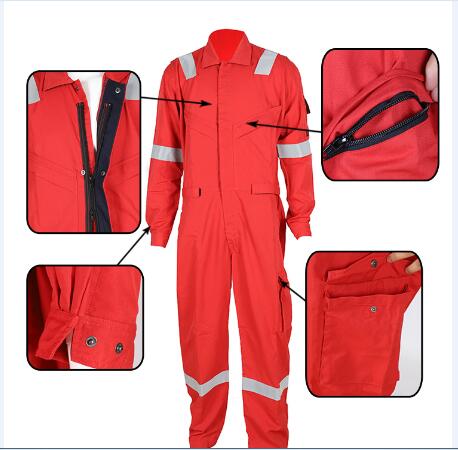

Fireproof Coverall, Security Protection
If you have never seen an open flame, an object that may cause sparks and other flames, it is difficult to fully understand how important it is to be fully protected from flame resistant coveralls at work. The direct damage caused by the flame itself is of course serious. But because flash fires last a relatively short time, they are usually not the most serious hazard you face. In many cases, the most serious injury occurs when the clothes ignite and continue to burn next to the skin. Clothes can burn until the fuel source is completely extinguished, causing damaging skin damage.When the flame or arc source is removed, the fire service stops burning. The material self-extinguishes and stops burning the skin by pushing open the oxygen and extinguishing the flame. The EN11612 flame prevention coverall should be washable and remain fire resistant. After decades of research and testing, the standard chemical used to make flame retardant jacket clothing is tetrakis (hydroxymethyl) phosphonium chloride (THPC) because it reacts to high temperatures and converts materials into non-flammable carbon. It will not cause adverse reactions to people wearing it.


FR flame resistant coveralls made from materials such as pure wool and silk are not susceptible to melting or catching fire when exposed to fire. They can be used directly in the manufacture of FR EN11612 flame prevention coverall without any chemical treatment. In addition to this, synthetic polymers such as nylon and polyester also provide the desired fire resistance. Natural materials such as cotton, linen, and synthetic materials that do not have fire resistance properties can be converted into the same material by chemical treatment.
Clearly, people wearing FR flame retardant jacket have a huge advantage over unprotected workers working in a flammable work environment. It is not enough to protect you by luck. Make sure you wear the right clothes to make sure you survive any mistakes. Today's fire protection (FR) coverall is functional, stylish and comfortable. Manufacturers such as XINKE PROTECTIVE have designed a complete set of FR coveralls that meet safety standards due to industry safety standards and companies that want to protect their workers.

